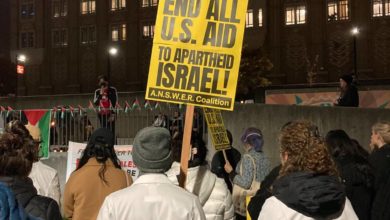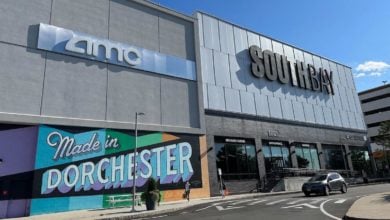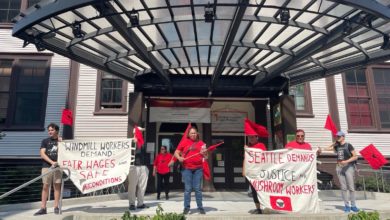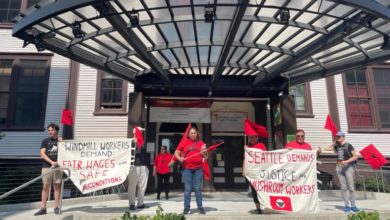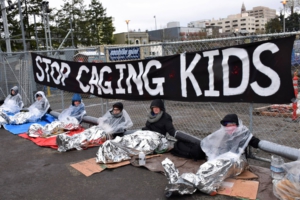
In the cold, early hours of March 26, upwards of 80 protesters from the No New Youth Jail coalition surrounded the construction site at 12th Ave and Alder where the Seattle youth jail was being built.
Mirroring the action which had taken place earlier in the month on March 6, protesters chained themselves together at every gate of the construction site, blocking supply trucks and equipment from entering and driving the supply of building materials to the site to a grinding halt. The protesters remained for eight hours; no arrests were made.
The People’s Moratorium
The action, referred to as the “People’s Moratorium,” was organized a week after the NNYJ coalition delivered a biting indictment letter endorsed by dozens of Seattle-based organizations to King County Executive Dow Constantine, demanding a halt to the construction of the youth jail.
“We demand a moratorium on construction until the County repurposes the site for meeting the needs of youth and families and eliminating any plans for courts or jails on the site,” the letter read. “Your lack of integrity is exposed by your disingenuous support for “zero youth detention” while simultaneously risking the County’s budget on an unfunded $210 million project designed specifically to detain youth. Stop the construction now and begin real negotiations with community stakeholders to repurpose the site for basic human needs and implement an end to youth detention.”
Constantine’s failure to respond to the letter prompted the day’s action, seen as both a continuation and escalation of previous actions. “Maybe Dow thinks that by ignoring us, we’ll go away,” said Chris, a protester at the site. “That isn’t going to happen. He wants to spend $210 million dollars on a racist youth jail instead of investing in things like housing or schools that will actually help low-income families and youth. It’s outrageous.”
A lesson in successful direct action
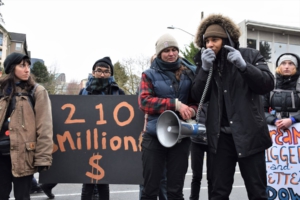
With its entry points blocked, trucks hauling raw materials and other equipment needed for the work site were completely unable to enter. Trucks could be seen circling the block before driving away with their loads of supplies.
The strategy proved to be highly effective: within several hours, information began reaching the protesters that the workers had run out of building materials such as brick mortar; news that was greeted by a series of jubilant cheers from the demonstrators.
“People have been pretty supportive so far,” noted Chris. “Some folks didn’t even know what was being built here, and they appreciated our information. Others have even brought us coffee and food; it’s freezing out here.” The support was not limited to onlookers however: “We’ve even had words of support and encouragement from the construction workers. A number of them don’t agree with what they’re building here.”
Sustained pressure yielding results
The protest, lasting a full eight hours, was only the beginning of a more sustained action. The following day, protesters descended on Dow Constantine’s office, disrupting the flow of work and flooding the space with letters and balloons bearing the demands of the coalition. The day after that, a traditional and social media storm was organized, bombarding Dow’s office and that of other public officials with calls to halt construction of the jail and to instead fund peoples’ needs in Seattle and King County.
The unrelenting pressure of the campaign did not go unnoticed. By the end of the first day, King County Executive representatives met with the protesters and begrudgingly informed the crowd that Constantine had agreed to meet with representatives among the protesters for a debate on the youth jail.
Nikkita Oliver, former mayoral candidate with the Seattle People’s Party and an outspoken supporter of the NNYJ Coalition, accepted the invitation with the stipulation that the debate be open to the public and other measures to ensure the accountability and transparency of the debate. Unfortunately, Constantine was unwilling to agree to this reasonable request.


